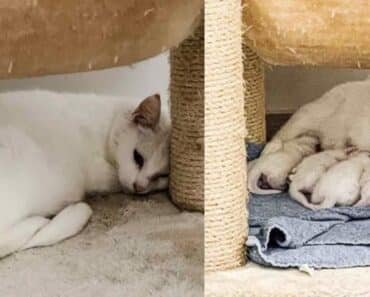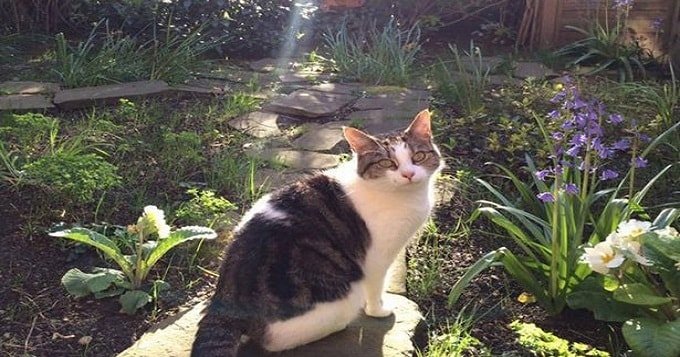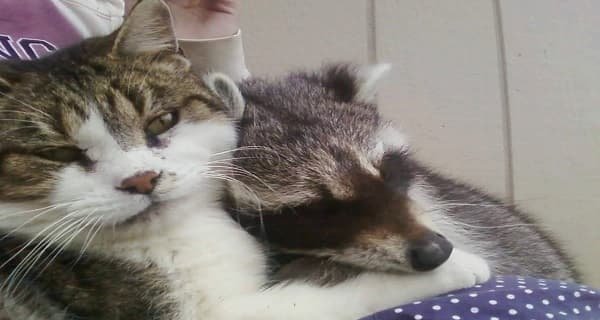By the time the cat named Bob came to the UC Davis veterinary hospital, it would appear that he had used up most of his nine lives. Afflicted with a very painful oral inflammatory disorder, Bob had already lost each and every one of his teeth in an effort to treat the disease known as feline chronic gingivostomatitis, or FCGS. In a last-resort effort, Bob’s human enrolled him in a clinical trial to receive a novel stem cell therapy treatment.

Credit: Courtesy photo
Bob was cured of a painful oral disease through a successful stem cell treatment.
Luckily for Bob and many other cats who were involved in the trial, the approach worked and Bob then went on to live a normal, pain-free life. (He did pass on several months ago of causes unrelated to FCGS.) Results from these clinical trial recently appeared in the journal Stem Cells Translational Medicine.
“This is the first study to demonstrate the safety and efficacy of using this type of stem cell therapy for a naturally occurring, chronic inflammatory disease in cats,” stated the study’s lead author, Boaz Arzi, a veterinary dental surgeon at the UC Davis School of Veterinary Medicine.
Arzi first became interested in starting the clinical trial after seeing cats who had all or nearly all of their teeth taken out to treat FCGS, but who still experienced the pain and suffering of the disease even after various courses of corticosteroids and antibiotics following teeth removal.
“FCGS is a challenging disease to treat, and we were frustrated that some cats wouldn’t respond to traditional treatment,” Arzi said. “We were banging our heads against the wall and this stem cell therapy was a last resort.”
The technique involves taking a cat’s own fat-derived stem cells, processing and characterizing them, and then in turn giving them back intravenously to reduce inflammation and promote tissue regeneration. The study also identified a potentially useful biomarker which could determine if cats will respond to stem cell treatment.
“We’re the first researchers to come up with this patent-pending technique for any mammals, including humans,” Arzi said.
There is hope for humans also
As a naturally occurring animal disease, FCGS also has the potential to serve as a useful model for the treatment of human chronic oral inflammatory disease — an approach which is increasingly known as “One Health.”
Nasim Fazel, a board-certified dermatologist and dentist at the UC Davis Health System and co-author on the paper, has been working closely with the veterinary medicine team to perform comparative studies between histopathologic characteristics and blood inflammatory biomarkers of FCGS and various chronic oral inflammatory conditions in humans such as oral lichen planus, aphthous stomatitis and vesiculobullous diseases.
Oral lichen planus, just like FCGS, is a T-cell-mediated chronic inflammatory mucosal disorder. It bears similarities in disease presentation, clinical course and difficulty of treatment.
“I was really excited to hear about their work because the cat disease behaved very similarly to what I saw in my human patients with oral lichen planus,” Fazel said.
Based on the success of the said research, she recently submitted a grant to establish a human clinical trial to use mesenchymal stem cell therapy to treat oral lichen planus.
“We’re in desperate need of novel therapies to treat chronic inflammatory mucosal disorders such as OLP, which are challenging to treat and of major impact to patients’ quality of life,” Fazel said. “Having this opportunity to translate what we’re learning in veterinary medicine to human medicine and working together to bring therapies discovered in the cat model to chronic oral inflammatory diseases in humans is exciting and has great potential.”
Collaborators and funding
Collaborating with Arzi and Fazel were Dori Borjesson, Frank Verstraete, Emily Mills-Ko, Amir Kol, Naomi Walker, Megan Badgley and William Murphy of the School of Veterinary Medicine, and Natalia Vapniarsky of the Department of Biomedical Engineering.
Funding for the study was initially supported by a grant from the veterinary school’s Center for Companion Animal Health and the George and Phyllis Miller Feline Health Trust of the San Francisco Foundation and two grants from the WINN Feline Foundation. Additional funds came from the National Institutes of Health.









